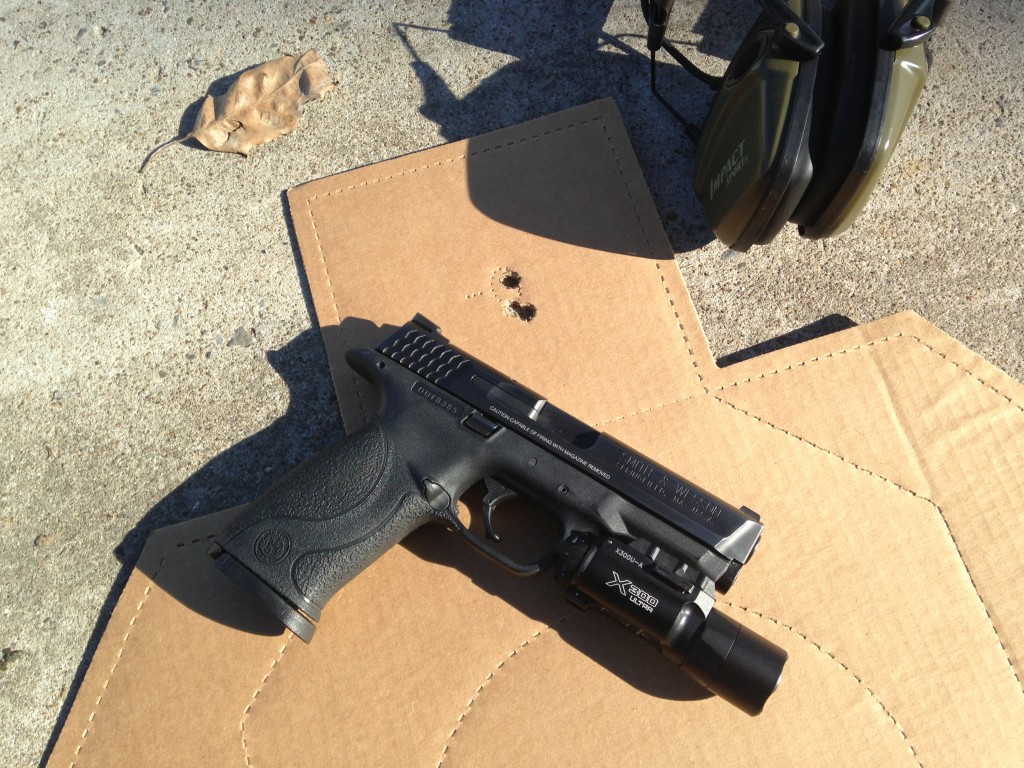One of the concepts I embraced many years ago was the idea that shooters aim into a larger area on any given target than what they need. Although, the phrase “Aim Small, Miss Small” is a bit cliche, it applies to high speed marksmanship. A shooter who accepts what many are taught in the academy of “Center the sights in the middle of Center Mass and you’ll do OK” are setting themselves up for nothing short of disaster when stress enters into the equation. When you accept a broad target area, it tends to also give the shooter a corona of inaccuracy that is emotionally comforting to them as Linus was about his blanket.
The concept of spot shooting does many things for us in dynamic shooting. First, it does embrace the notion that if I pick a specific spot on my target, and drive the sights aggressively to that spot, that if I have a trigger control error on the way out, or if my sights don’t stop precisely where I want the round to go, that the shot will still be a good one. It will minimize the error.
Secondly, it gets the shooter used to driving the sights at speed. How could this be beneficial? Ever notice how shooters will often blaze away shooting a Bill Drill to the “A” box, but slow fairly significantly when you ask them to perform the same feat “all in” on the head box? We’ve all been there. But, when you cut off the head on an IPSC or IDPA target and place it in the “A” box, or 8 inch circle, you find that there isn’t that much difference in the target areas. Just the perception that because the head box is smaller, we some how need to slow down to make a “precise” shot, instead of the “coarse” shot in the circle or “A” box. By picking a specific spot to drive the sights to, it reinforces to the shooter that when its time to “go fast”, that the aiming area on any target presented is not much harder than the open ones. It is just the perception of all that extra cardboard that gives us comfort, not the complexity of the shot.
One can find a spot to drive the sights to on any target in practice, competition, or the street. They just have to have the buy in to do so and that the technique works. Those who believe that they won’t see their sights in a fight, won’t see their sights in a fight. We do what we train the subconscious to. There is a major difference in “target” shooting, and dynamic gun fighting. But, the concepts are the same. It is doubtful you’ll get the kind of grouping in the above picture when you are moving, and your opponent is moving, or when you’re amped up and your heart rate is above 160. But, if you drive your sights aggressively, the results will be way better than just hanging the front sight out there and hoping for the best.




Jerry
I think what you describe is a shooter still in the “conscious” phase of shooting. They are acutely aware of the target and a tool in their hand. Thus, they must go through a conscious checklist prior to making the weapon go bang.
The shooter who has developed the sub-conscious shooting style merely reacts to what their senses detect. The subconscious can simply be another term for instinct. Human tasks performed based on instinct are almost always performed faster and to a higher degree of efficiency than when we have to engage a thought process.
Brian Enos has written about this more than perhaps anyone. If you want to be both fast AND accurate, you must move into the sub-conscious realm of shooting.
To evolve into such a shooter requires significant range time and dry fire sessions. And the length of time to develop into a sub-unconscious shooter is different for every human.
And I did note your statement “We do what we train the subconscious to.”
But, a shooter must work to get to the subconscious shooting state. You simply can’t will it to happen; IT requires significant amount of training to evolve into performing tasks in the subconscious state.
It’s possible that shooters slow down on the USPSA headbox because they’re going for Alphas.
Excellent write up Jerry, Thanks.